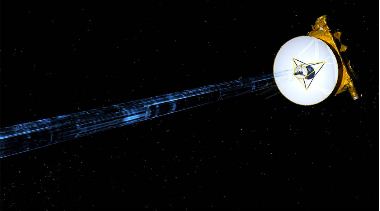It took more than a year but the last bits of science data from New Horizons’ Pluto flyby — stored on the spacecraft’s digital recorders since July 2015 — arrived safely on Earth this week, NASA said. The final item – a segment of a Pluto-Charon observation sequence taken by the Ralph/LEISA imager – from New Horizons spacecraft travelled over 5.5 billion kilometers to reach earth, the US space agency said in statement. The downlink came via NASA’s Deep Space Network station in Canberra, Australia. It was the last of the 50-plus total gigabits of Pluto system data transmitted to Earth by New Horizons over the past 15 months. “We have our pot of gold,” said Mission Operations Manager Alice Bowman of Johns Hopkins Applied Physics Laboratory (APL) in Laurel, Maryland.
“There’s a great deal of work ahead for us to understand the 400-plus scientific observations that have all been sent to Earth. And that’s exactly what we’re going to do-after all, who knows when the next data from a spacecraft visiting Pluto will be sent?” Alan Stern, New Horizons principal investigator from Southwest Research Institute in Boulder, Colorado, added.
Because it had only one shot at its target, New Horizons was designed to gather as much data as it could, as quickly as it could – taking about 100 times more data on close approach to Pluto and its moons than it could have sent home before flying onward.
The spacecraft was programmed to send select, high-priority datasets home in the days just before and after close approach, and began returning the vast amount of remaining stored data in September 2015.
Bowman said the team will conduct a final data-verification review before erasing the two onboard recorders, and clearing space for new data to be taken during the New Horizons Kuiper Belt Extended Mission (KEM).
KEM will include a series of distant Kuiper Belt object observations and a close encounter with a small Kuiper Belt object, 2014 MU69, on January 1, 2019, NASA said.
- Lanka’s post-attacks nightlife loses fizz
- On a film clip from The Godfather Part II
- Google unveils Pixel 3a, 3a XL
- Kavinda wants govt to acquire sharia university
- Federer near flawless in clay comeback
- Ignoring security warnings led to Easter Sunday attacks – Kiriella
- Blast in Lahore kills at least four, wounds 24
- Govt says cannot keep schools closed
- PM wants sophisticated technology to face global terror
- Facebook building privacy-focused social platform, says Mark Zuckerberg


Leave a comment